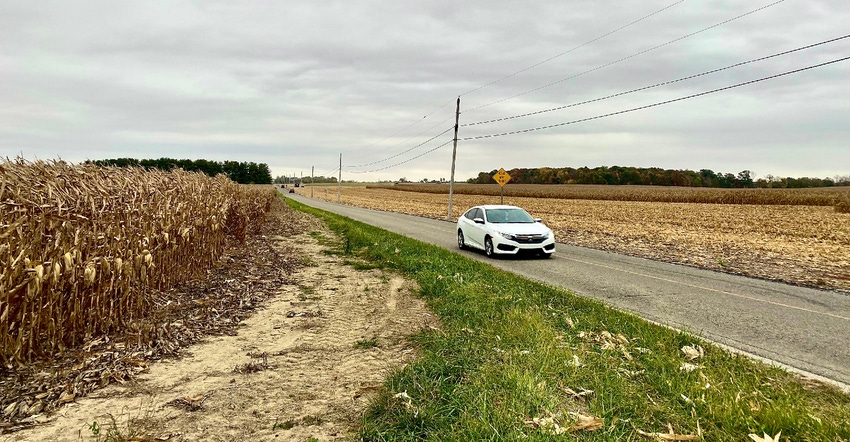January 11, 2021

The late Ronnie Mohr, Greenfield, Ind., spent lots of time promoting a cause that he believed in wholeheartedly. He saw things that obscured vision for drivers on rural roads as a hazard. Specifically, he thought farmers either should not plant corn so close to the road that it could block vision at intersections, or they should cut corn to restore vision when necessary.
Mohr’s brother was involved in an accident caused by tall crops at an intersection. Ironically, Mohr had written a letter to a local paper about the potential hazard the day before the accident. You can read more in Sydney Burkhart’s article online.
Mohr lobbied legislators to take action to correct this problem. However, it didn’t get traction. Some told him that even farmers themselves couldn’t agree on what to do. The Legislature chose not to get involved.
Tall crops at intersections isn’t a 21st century problem. Bill Field, Extension farm safety specialist at Purdue University, promoted a program called Cutting Corners in the early 1980s. FFA chapters were recognized for cutting corn at dangerous intersections. Some topped corn, leaving ears, while others cut down whole stalks and hauled them away to feed to cattle. Eventually, interest waned. But the need persists.
Make a difference
Property rights and individual freedom are as dear to me as to anyone else. But there is also a time for common sense and thinking of the greater good. If you could prevent an accident by not planting a couple rows of corn close to the road for 50 or 100 feet, wouldn’t it be worth it?
Apparently, some agree, until the potential threat of being forced to do it through government regulation gets involved. I don’t like government intervention either, especially if there is a “stick.” But if that’s what it takes to get some people to comply, that’s what it takes.
Many years ago, our oldest daughter, Allison, worked one summer for a county weed board. Her job was to drive country roads and identify roadsides with Canada thistles growing. It’s a prohibited noxious weed by state law. She would flag it, and the farmer and/or landowner would get a letter asking them to destroy the thistles. There was a “stick” if they didn’t comply.
Many sprayed or mowed the thistles. But some were so irate, they not only hassled Allison, they even called me — as her father! It wasn’t pleasant. How did the weed board situation turn out? Enough farmers convinced county officials that the weed board was a bad idea, and it was disbanded.
Yes, no one likes regulation. Maybe there’s a better way. Maybe there should be a carrot: If you don’t plant those rows or cut them to restore vision in a timely manner, and can document it, perhaps you get a reduction on your property taxes on that field.
Is it practical? I don’t know. But is ignoring the issue the best way to act as a neighbor? No. It’s also not a fitting, lasting tribute for Ronnie Mohr, who passed away Dec. 14.
As agricultural and rural neighbors, we can do better. Let’s look for ways to accomplish the simple goal Mohr sought: restoring safety to rural roads, with everyone doing their part.
Comments? Email [email protected].
You May Also Like




